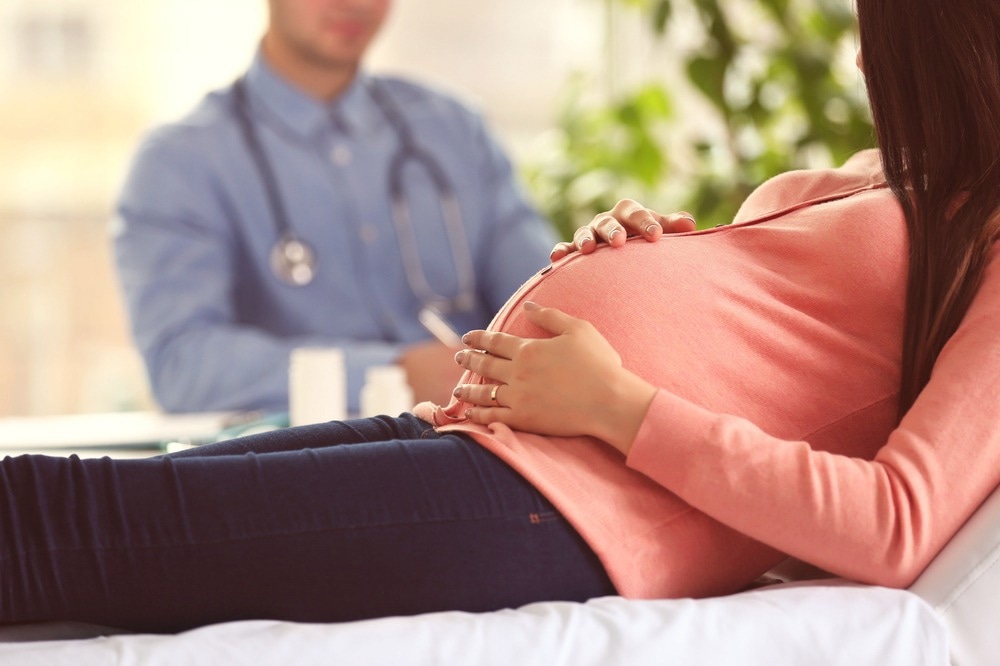Sponsored Content by BGI GenomicsDec 8 2022Reviewed by Olivia Frost
In this interview, NewsMedical speaks with Renyi Hua, maternal-foetal medicine and prenatal diagnosis specialist from the International Peace Maternity and Children’s Hospital, Shanghai, China, about her experience using whole exome sequencing and carrier screening tests.
What types of patients are treated at the International Peace Maternity and Children’s Hospital, and what services are offered?
Although we are a prenatal department, we also have adult patients and play a role in prenatal diagnosis. When patients with undiagnosed or uncertain dysplasia or dysmorphism come to us, we offer karyotying first with or without chromosome microarray analysis. If no abnormalities are found, whole exome sequencing or other tests will be offered depending on their phenotype.

Image Credit: ShutterStock/Africa Studio
Quite a lot of patients are referred by the Assisted Reproductive team because our results will help them with plans for conception.
For certain prenatal cases, pregnant women who meet our guidelines are offered an invasive prenatal diagnosis. Those criteria include advanced maternal age, family history for hereditary diseases, abnormal childbearing history, parents who carry chromosome abnormalities, high risk, structural anomalies found in ultrasound, abnormal results from prenatal screening tests, or other conditions that justify the patient needing invasive tests.
Can you describe the process to determine what types of tests need to be conducted for patients?
First, we would offer a scan of the nuchal fold around 11 to 13 weeks, plus six days. If the results are normal and the woman does not meet the criteria for invasive procedures, NIPT or Down's screening will be offered. If there is a thickened nuchal fold or if the mother meets the criteria, chorionic villus sampling (CVS) or an appointment for amniocentesis will be made.
The next ultrasound scan will be done at 22 to 24 weeks, which is an anomaly scan. If there is a major malformation or multi-system anomaly, an amniocentesis will be suggested for the karyotype as well as a chromosomal microarray analysis (CMA).
If results are normal, trio-whole exome sequencing (Trio-WES) will be offered. There are some special cases when the anomaly shows late in ultrasound. After 26 weeks, we will discuss with the parents whether to run CMA and Trio-WES at the same time for ethical reasons.
When did you start using whole exome sequencing (WES), and what were the criteria?
We started our WES in 2019. In 2020, we had over 600 samples in total; among them, almost half were singletons and over 100 were Trio-WES. In 2021, we had more than 1,000 samples, a big increase. Among them, around 200 were singletons, and almost 300 were Trio-WES. We changed our protocols that year to include parents in prenatal cases, which is why there are quite a lot of Trio-WES.
This year, until September, we had over 700 samples – fewer than 100 were singletons and over 200 were Trio-WES. In total, the positive results were under 20%. Our criteria this year for Trio-WES were a thickened nuchal fold or hidrocystoma, cardiovascular malformation, and multiple anomalies.
How does your institution apply carrier screening tests?
We have been using a panel including 155 hereditary genetic diseases covering different areas and systems. We then follow the protocol that we use in the clinic: for women who are not pregnant or pregnant less than 14 weeks, we suggest they take the test first and alone.
We only tend to test the partner if the mother’s result comes back positive. If the woman is more than 14 weeks, we suggest that both parents take the tests to save time for potential prenatal diagnosis.
Can you share some of the cases from this year and how these services helped inform health decisions?
We had almost 3,000 cases this year. Almost half of the candidates had at least one pathogenic or likely pathogenic mutation. Several couples had mutations in the same gene. A number of them chose to have a natural conception and prenatal diagnosis afterward. Others chose to do preimplantation genetic testing (PGT).
One case involved a 32-year-old woman who did a carrier screening test for a 12-week pregnancy. The results showed that the woman carried a mutation in the SMN1 and EDA genes, while the partner’s test was negative. We offered her an amniocentesis for chromosome anomalies and the EDA gene.

Image Credit: ShutterStock/Africa Studio
The result was a homozygous boy, so for her next pregnancy, we suggested she do a PGT or a natural conception and prenatal diagnosis.
Another case involved a 28-year-old woman who was 13 weeks pregnant and of Korean nationality. Her carrier screening test results showed a mutation of the MMAB gene and a mutation of the ATP7B gene, which causes Wilson’s disease. Her partner was also of Korean nationality and carried the mutation of the ATP7B gene.
We offered her an amniocentesis for chromosome anomalies as well as a checkup for the ATP7B gene. Luckily, the foetus only inherited the mutation from her mother, and the foetus was heterozygous, so the mother is progressing with her pregnancy.
Case three concerned a 35-year-old woman with an abnormal childbearing history. She had a termination in 2015 due to fetal malformation. She did not have any genetic checkups or any arrays or keep any samples of that baby. Thirteen weeks into her next pregnancy, the woman’s ultrasound showed punctiform limbs and an abnormal nuchal fold. We offered her a CMA and Trio-WES.
Both of the parents carry the mutation in the ROR2 gene, which causes Robinow syndrome, and all the phenotype matches that we saw in the ultrasound for this baby. The woman decided to also terminate this pregnancy. We suggested a data re-analysis before her next pregnancy.
About BGI Genomics

BGI Genomics is the world's leading integrated solutions provider of precision medicine, now serving customers in more than 100 countries.
They provide academic institutions, pharmaceutical companies, healthcare providers, and other organizations with integrated genomic sequencing, proteomic services, clinical testing, and solutions across a broad range of applications.
They have more than 20 years of genomics experience helping customers and partners achieve their goals by delivering rapid, high-quality results using a broad array of cost-effective, cutting-edge technologies, including their own innovative DNBSEQ™ sequencing technology.